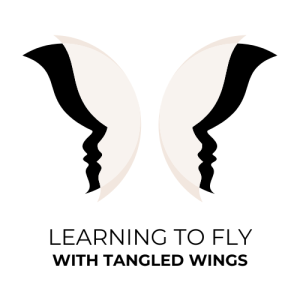The hand is comprised of 27 bones. When we combine the movements of the scapula, shoulder, & forearm rotation, we can essentially rotate our hand 360 degrees. In our yoga practice, we often use the hands for support & to bind postures.
In our inverted yoga poses, our hands become our foundation to ground & connect with the earth as we balance our body above. Similarly to the feet, we engage uddiyana bandha by creating a lift in the arch of the center of our hands while rooting down through the base & tips of our fingers. Keeping the fingers lightly bent allows us to adapt to the sway of our bodies while we find our balanced center in the pose.
The movements of the wrist are flexion (as if you were holding your hand out to be kissed), extension (as if you were doing the gesture to stop), abduction (technically referred to as ulnar deviation), & adduction (technically referred to as radial deviation).
The forearm is comprised of two bones, the radius & ulna, that touch each other at the elbow & the wrist. The movement of these joints is pronation (medially directed rotation by lifting the outer edge of the hand) & supination (laterally directed rotation by lifting the palm of the hand). In anatomical position, the palms face forward in supination. Pronation occurs if we rotate the palms to face backward. The hand pronates & supinates as directed by the movements of the forearm, though the hand, wrist, & fingers may move independently and/or together. Just as in the lower kinetic chain of the legs, movements in the hand effect the entire upper kinetic chain, through the wrist & elbow, & all the way into the shoulder girdle. Unless we isolate the hand specifically, pronation of the hand is associated with internal rotation of the shoulder, which causes the scapula to retract. Similarly, supination is associated with external rotation of the shoulder, which causes the scapula to protract.
Flexors
The anterior (or palmar side) of the forearm contains the flexor muscle group. This is comprised of the flexor digitorum (flexes the fingers), flexor carpi ulnaris (flexes the carpals on the ulnar side), & the flexor carpi radialis (flexes the carpals on the radial side). These attach on the inside of the elbow & run through the carpal tunnel to their attachments on the hand. Together, they work to flex the fingers, wrist & hand.
Luckily for us, the flexors are actually at their strongest when the wrist is in a hyperextended position (think up dog, or many arm balancing postures). By resisting hyperextension, the flexors help us hold balancing poses.
Extensors
The posterior extensor muscle group is smaller & not as strong as the flexor muscle group. Similarly to the flexors, there is the extensor digitorum (extends the fingers), extensor carpi ulnaris (extends the carpals on the ulnar side), & the extensor carpi radialis (extends the carpals on the radial side). These attach to the hand via a tendinous sheath & travel up the arm, cross the elbow, & attach opposite to the flexor muscle group.
Balancing the flexor & extensor muscle group allows us the precise movement of our phalanges (fingers) that allows us to execute delicate & intricate movements with our hands such as typing & playing piano.





